-
CATEGORY ::
- All Seeds /
- All Flower Seeds
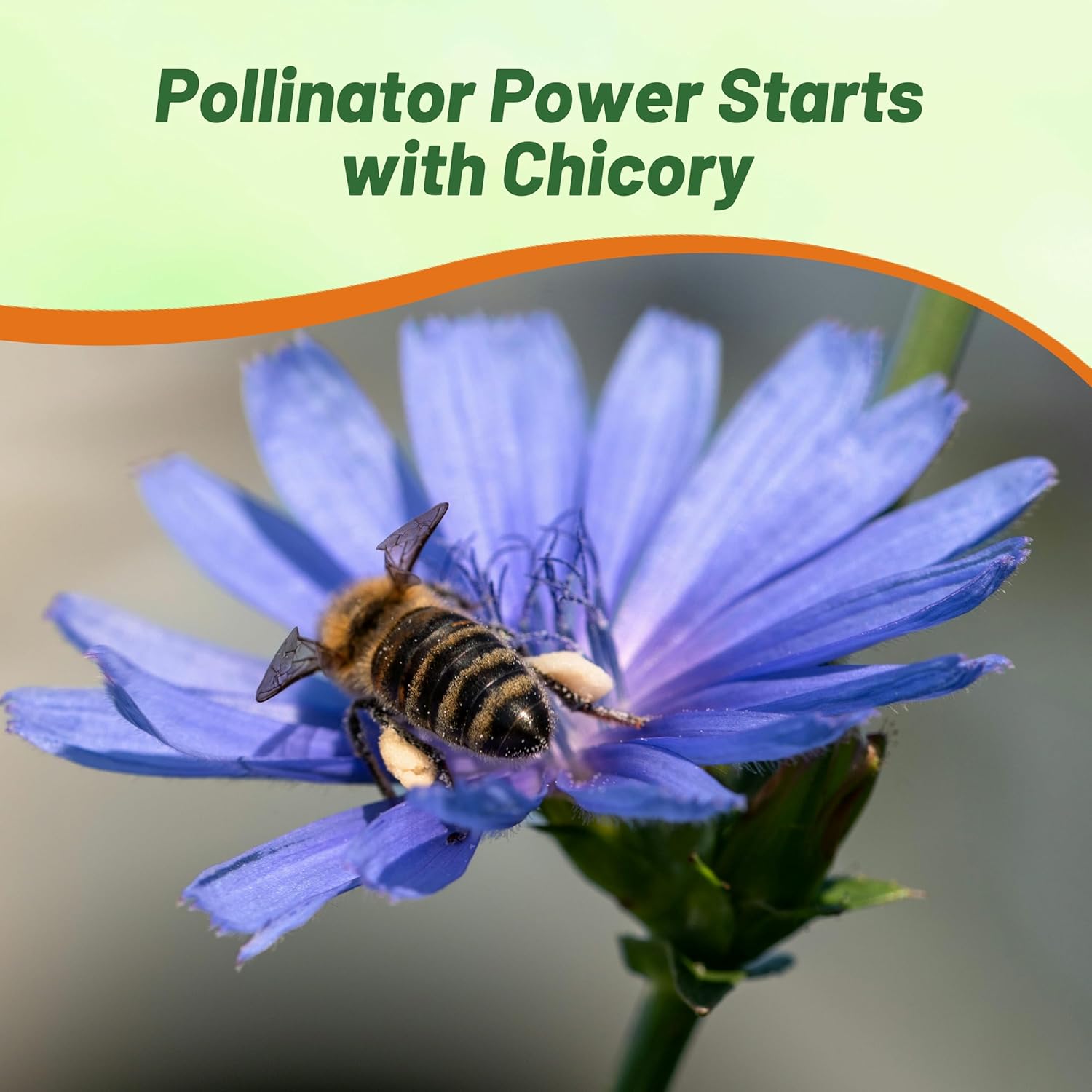


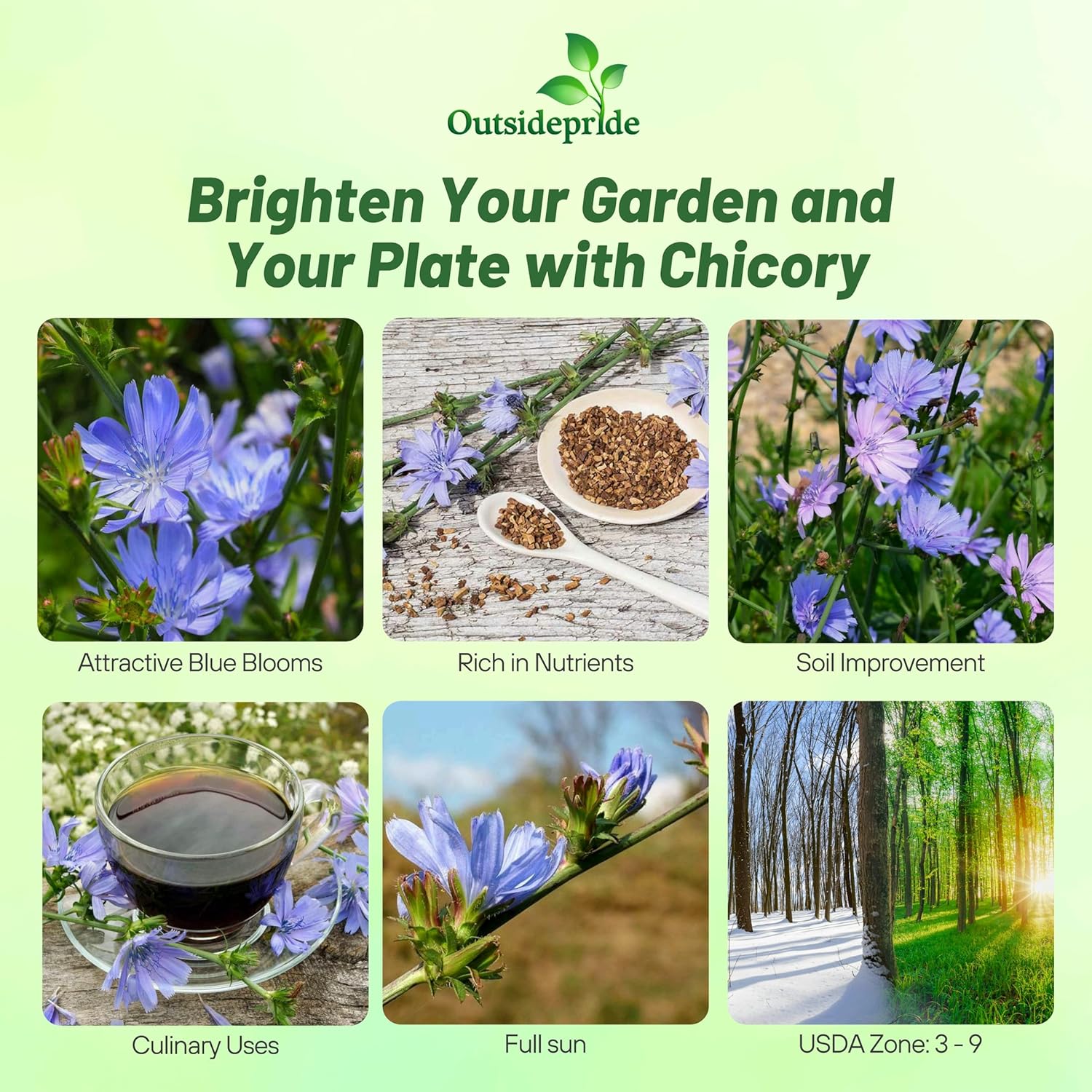
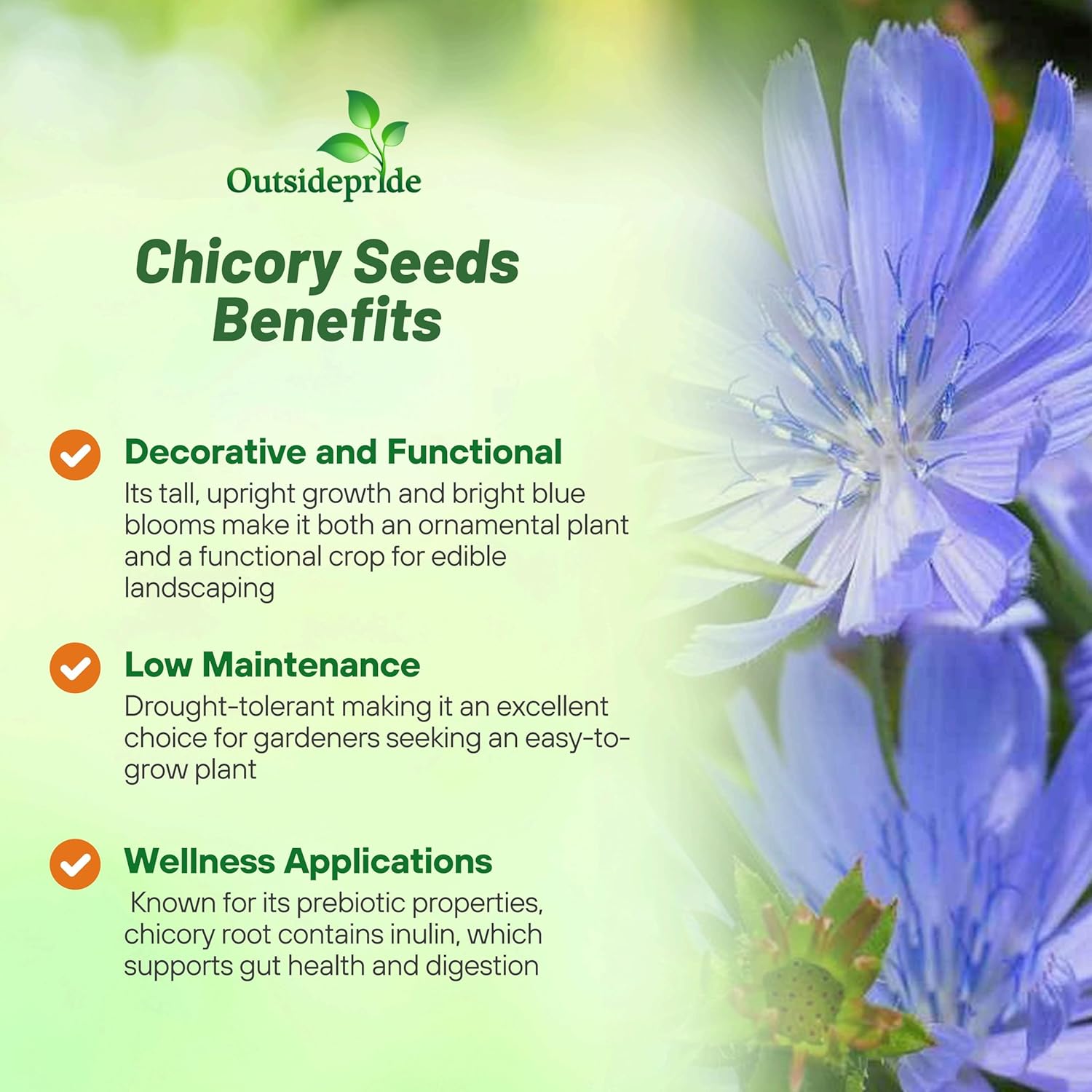
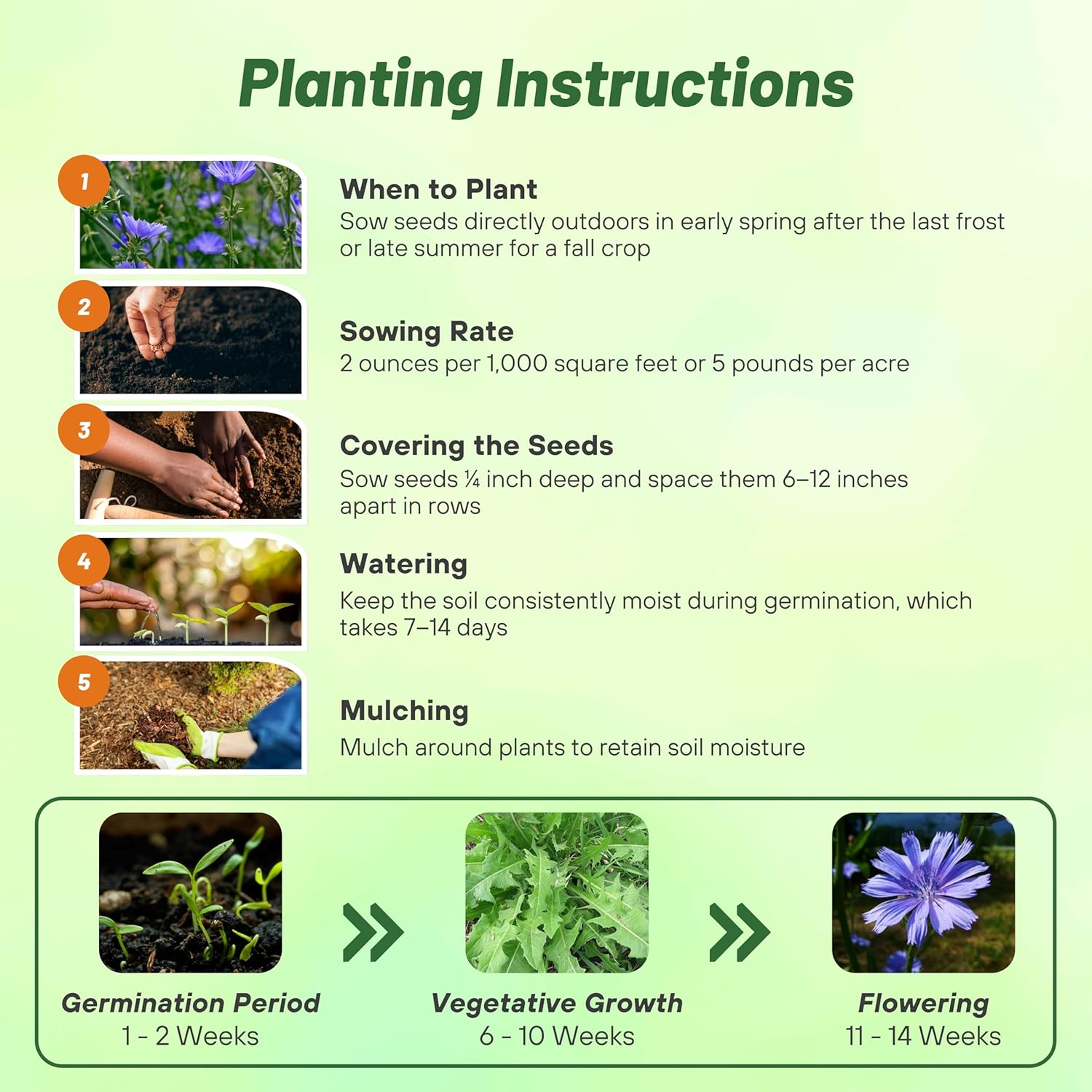
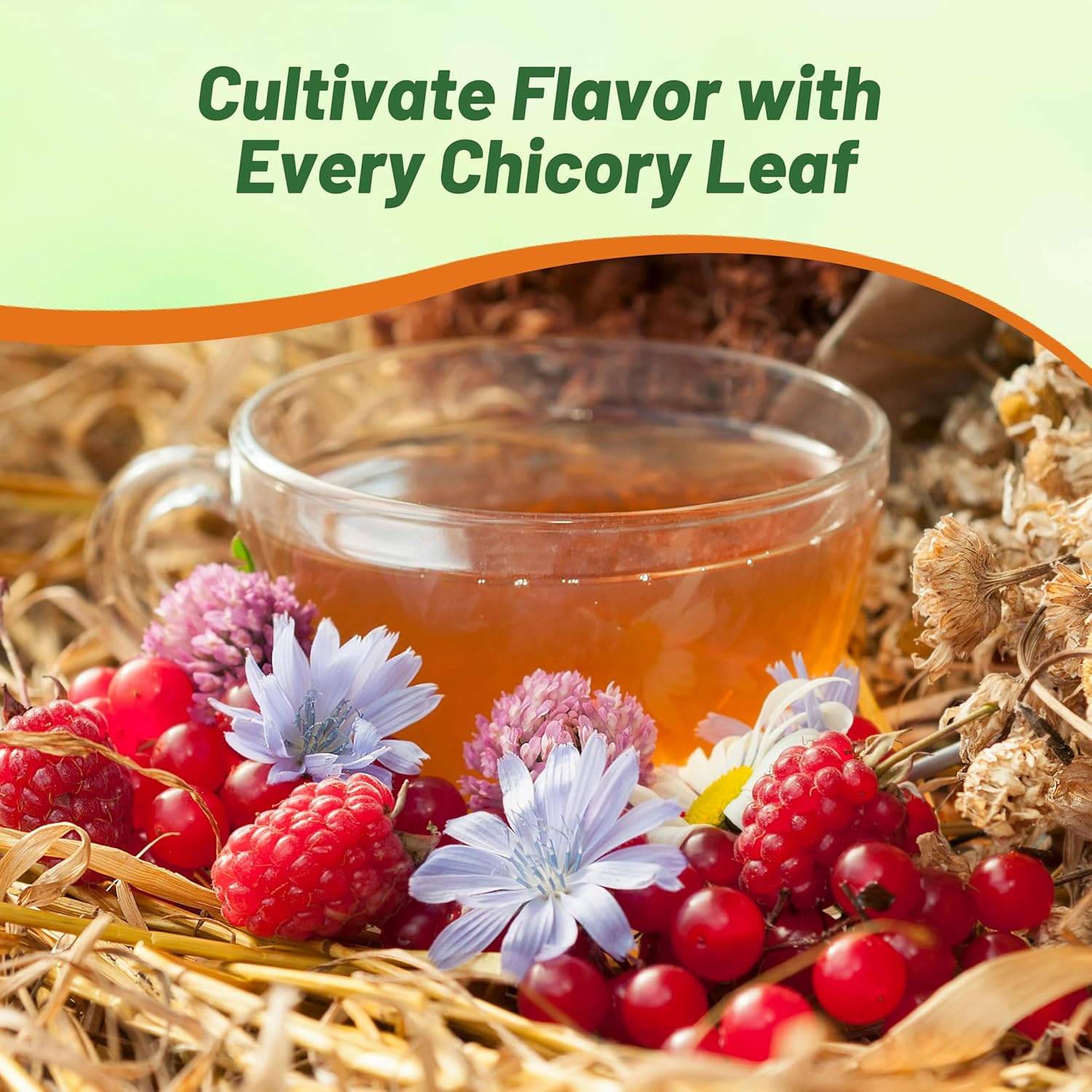

Chicory Seeds
SEEDS PER POUND
425,923
SEASON
Perennial
USDA ZONES
3 - 9
HEIGHT
48 inches
BLOOM SEASON
Summer
BLOOM COLOR
Blue
ENVIRONMENT
Full sun
SOIL TYPE
Fertile, well-drained, pH of 5.5+
DEER RESISTANT
No
OFTEN HOUSE PLANT
No
SEASON
Perennial
USDA ZONES
5 - 10
HEIGHT
10 inches
BLOOM SEASON
Spring through winter
BLOOM COLOR
Mix
ENVIRONMENT
Partial shade
SOIL TYPE
Well-drained, pH 6.1 - 7.5
DEER RESISTANT
Yes
HOUSE PLANT
Yes
LATIN NAME
Sinningia speciosa
SEASON
Annual
USDA ZONES
5 - 10
HEIGHT
8 inches
WIDTH
30 inches
BLOOM SEASON
Mid spring to early fall
BLOOM COLOR
Yellow with white edge
GROWTH RATE
Fast
ENVIRONMENT
Full sun
DEER RESISTANT
Yes
LATIN NAME
Limnanthes douglasii
SEASON
Annual
USDA ZONES
3 - 11
HEIGHT
120 inches
BLOOM SEASON
Spring to fall
BLOOM COLOR
Purple
ENVIRONMENT
Full sun to partial shade
SOIL TYPE
Rich, loamy soil, pH 5.5 - 6.5
DEER RESISTANT
No
SEASON
Perennial
USDA ZONES
7 - 11
HEIGHT
28 inches
BLOOM SEASON
Spring to fall
BLOOM COLOR
Rosy purple
ENVIRONMENT
Full sun to partial shade
SOIL TYPE
Well drained soils, pH 6.6 to 7.5
DEER RESISTANT
Yes
SEASON
Perennial
USDA ZONES
7 - 11
HEIGHT
4 inches
WIDTH
12 - 18 inches
BLOOM SEASON
Early spring to early fall
BLOOM COLOR
Pink
ENVIRONMENT
Full sun to partial shade
FOOT TRAFFIC
Light
DEER RESISTANT
Yes
SEASON
Annual
USDA ZONES
3 - 11
HEIGHT
100 - 140 inches
BLOOM SEASON
Late spring to late summer
BLOOM COLOR
Mix
ENVIRONMENT
Full sun
SOIL TYPE
Well drained, pH 6.6 - 7.5
DEER RESISTANT
No
HOUSE PLANT
No
SEASON
Annual
USDA ZONES
4 - 9
HEIGHT
12 inches
BLOOM SEASON
Late summer to early fall
BLOOM COLOR
Mix
ENVIRONMENT
Full sun
SOIL TYPE
Moist, well-drained, pH 6.6 - 7.3
DEER RESISTANT
Yes
About...
Chicory (Cichorium Intybus) - Chicory seeds produce a perennial wild flower that is not only lovely but beneficial as well. Chicory plants grow easily from flower seed in sunny locations and in well-drained or moderately drained soils. Cichorium Intybus plants have clusters of 1 - 3 daisy-like flowers, in brilliant pastel blue, and they prefer medium to higher fertility levels and a pH of 5.5 or greater.
MORE FLOWER OPTIONS
Planting Directions
TEMPERATURE
65 - 75F
AVERAGE GERM TIME
7 - 21 days
LIGHT REQUIRED
No
DEPTH
1/4 inch
SOWING RATE
2 ounces per 1,000 square feet or 5 pounds per acre
MOISTURE
Keep moist until germination
PLANT SPACING
10 - 12 inches

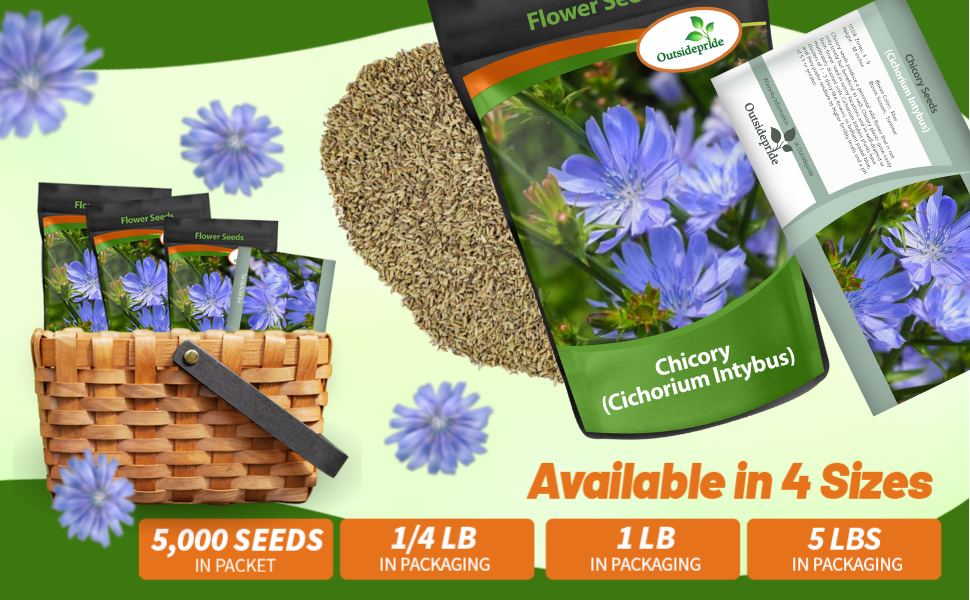
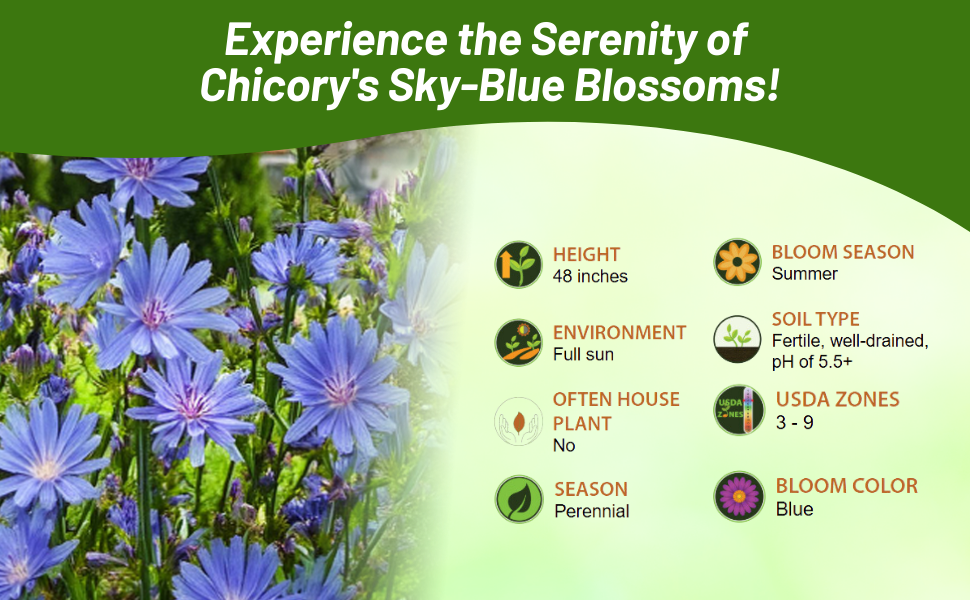

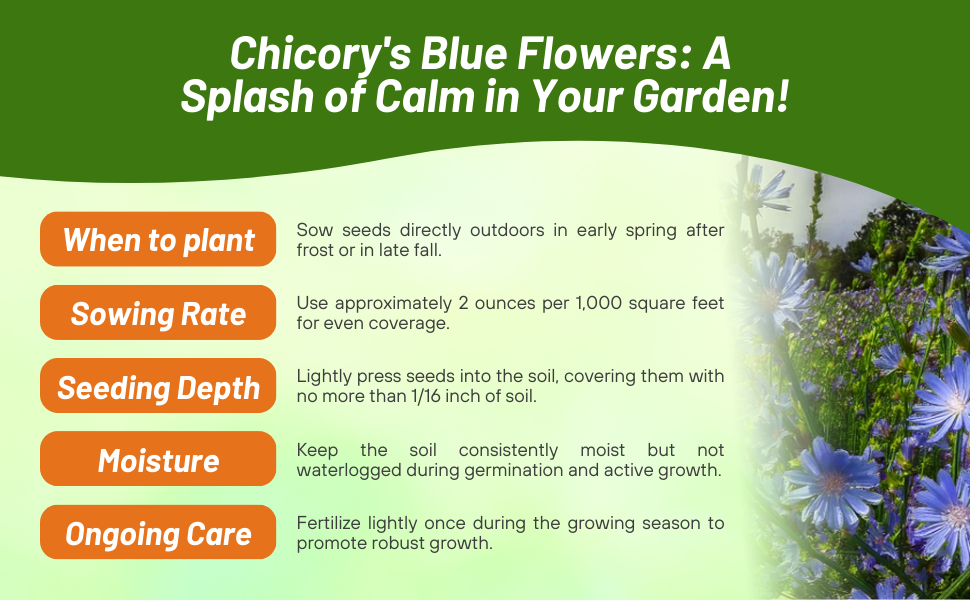
Chicory (Cichorium Intybus) - Chicory seeds produce a perennial wild flower that is not only lovely but beneficial as well. Chicory plants grow easily from flower seed in sunny locations and in well-drained or moderately drained soils. Cichorium Intybus plants have clusters of 1 - 3 daisy-like flowers, in brilliant pastel blue, and they prefer medium to higher fertility levels and a pH of 5.5 or greater. Chicory produces leafy growth that is higher in nutritive and mineral content than is produced by alfalfa or cool season grasses. It is drought tolerant due to its taproot which goes down deep to provide ample water. Chicory forage provides both spring and summer grazing with average growth rates from April through October of 50 pounds per acre per day. Chicory is a relatively new forage crop in the United States but has been used in other countries for more than 300 years. With warm temperatures in the spring it produces large numbers of leaves from the crown. In late spring, often during the second year of establishment, a few flower stems begin to develop from the crown and will reach heights of 6 feet. Even though Chicory has a thick taproot, it can be exposed and damaged by overgrazing, excessive hoof traffic, and frost heaving.
Seeding into an existing pasture - Broadcasting and no-till drilling are two methods that can be used to seed Chicory wild flower seed into existing pastures. Broadcast Chicory seeds onto existing pastures during the late winter or early spring when the soil freezes at night but thaws during the day. The freezing creates ice crystals that melt during the day and leave small holes in which the flower seeds can fall. To improve the success of this method, also called frost seeding, be certain to broadcast the flower seed early in the day before the soil thaws.
Seeding into a tilled seedbed - A moist, firm seedbed is required for forage Chicory, Chicory-grass, or Chicory-legume mixtures. Spring seedings of Chicory are usually successful. Summer seedings have been successful in some areas with proper irrigation. You do not want to sow Chicory flower seed after the middle of August as cooling temperatures and shortening day lengths in the fall impede Chicory stand development. You may either drill or broadcast chicory flower seed when planting although drilling is preferred because it provides a more uniform depth of planting. Plant Cichorium Intybus seeds 1/4 inch deep. Cultipacking the seedbed before and after broadcast seeding ensures the seeds have good seed-to-soil contact and are not planted too deep.
For more information on Chicory you may go to PSU where this information was adapted from. Click the link if you would like to view the PDF file from PSU. [Chicory]
Planting Directions
TEMPERATURE
70 - 75F
AVERAGE GERM TIME
21 - 28 days
LIGHT REQUIRED
Yes
DEPTH
Do not cover the seed but press into the soil
SOWING RATE
4 seeds per plant
MOISTURE
Keep seed moist until germination
PLANT SPACING
10 inches
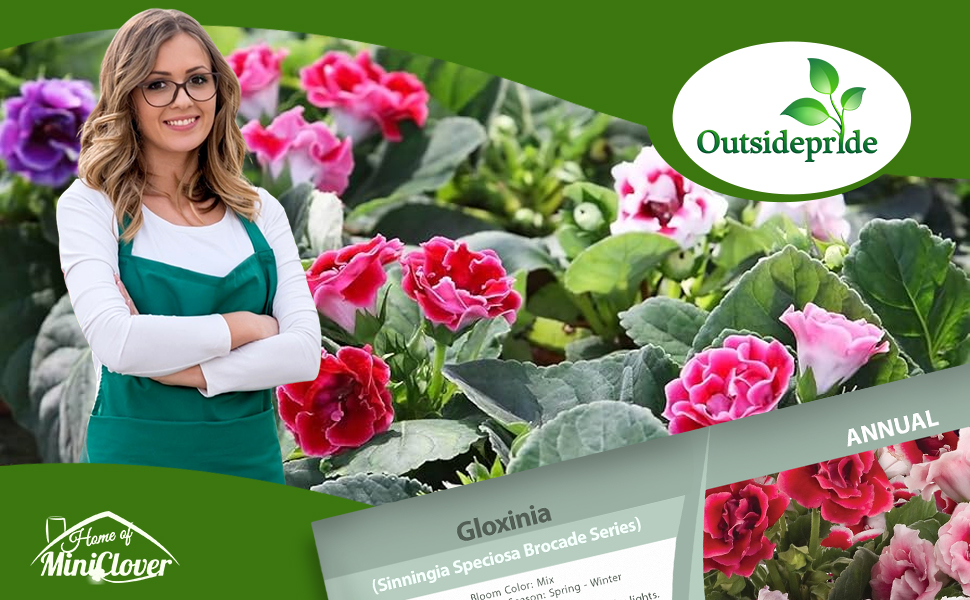
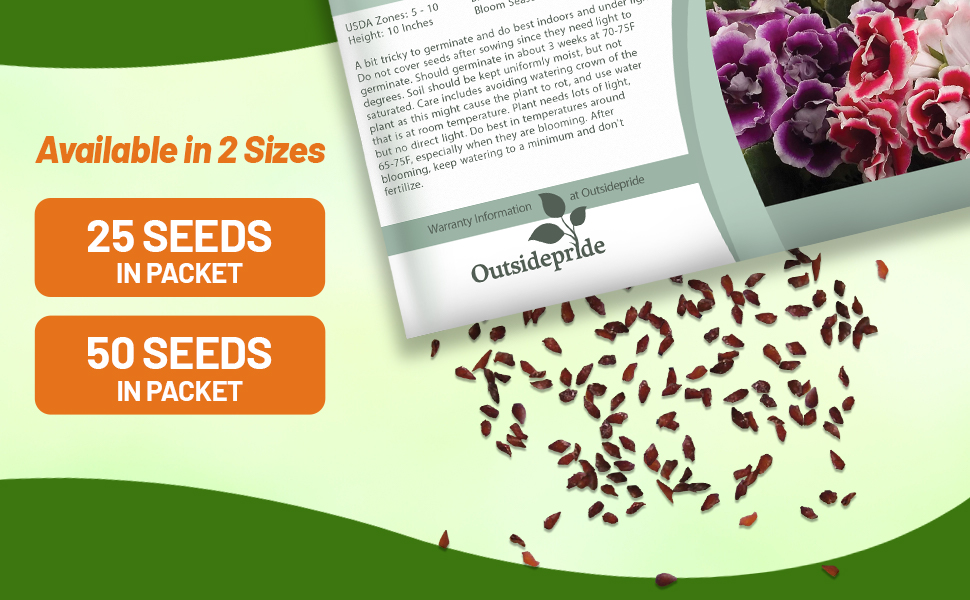
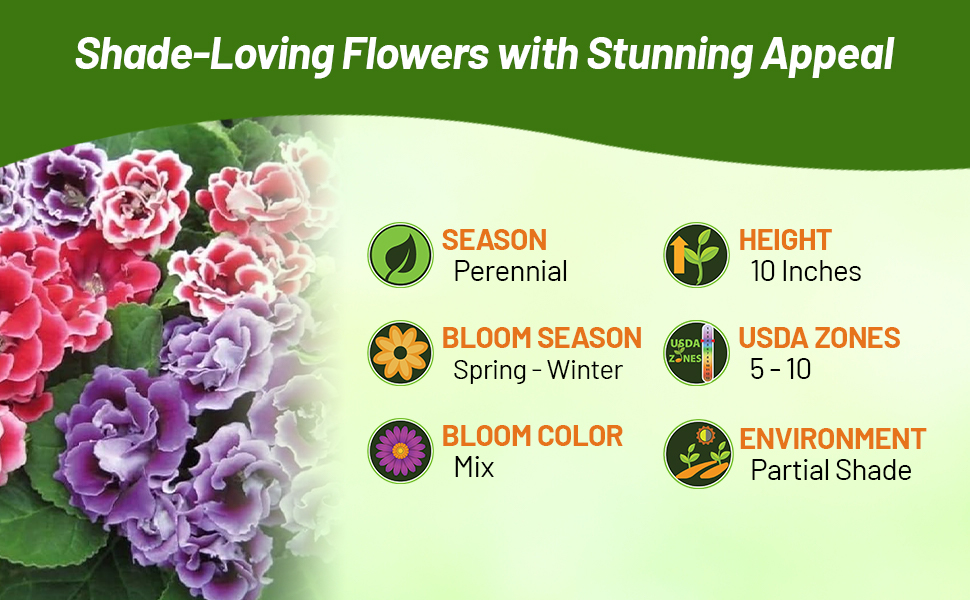
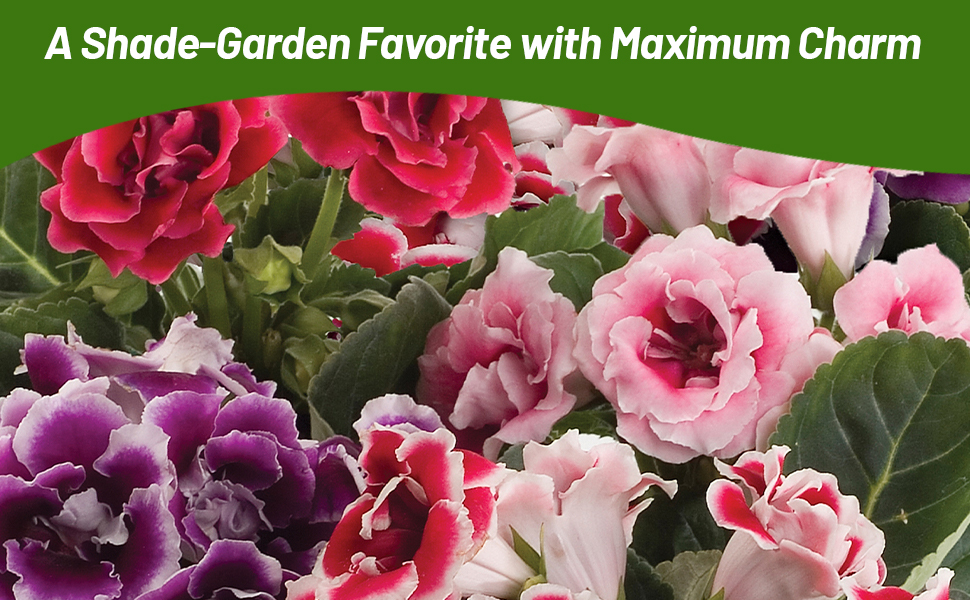
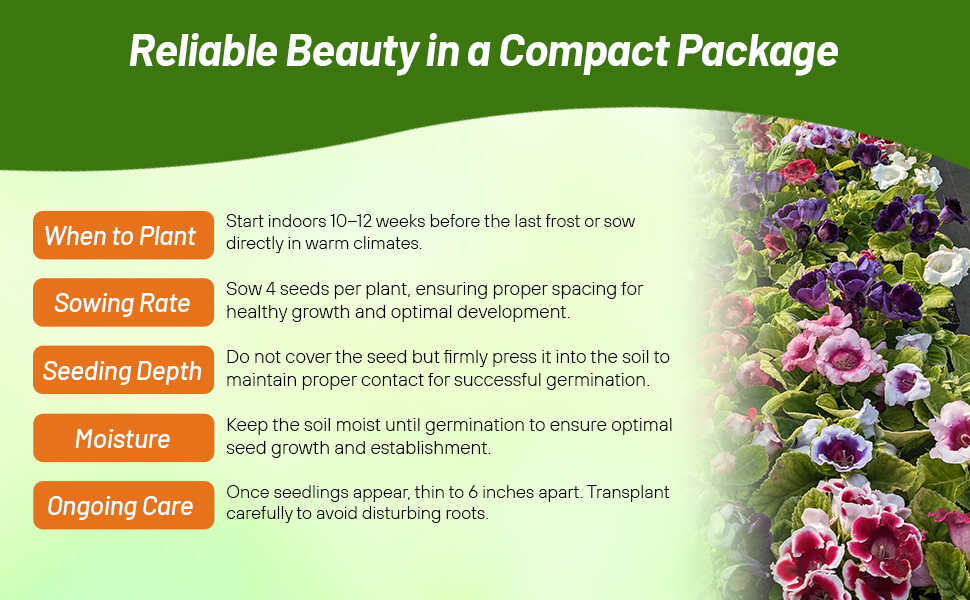
Gloxinia (Sinningia Speciosa Brocade Series) - Sow Gloxinia seeds to produce a beautiful mixture of red, blue, and white blooms. These compact Gloxinia plants blossom four to six months after sowing. They will flower for about 2 months, go dormant for about 2 months, and then begin growing again and start flowering. Gloxinias make a great house plant, giving wonderful, colorful blooms! Sinningia Speciosa is often referred to as Florist's Gloxinia or Brazilian Gloxinia.
Gloxina seeds are a bit tricky to germinate and do best indoors and under lights. Do not cover the flower seeds after sowing since they need light to germinate. Sinningia Speciosa seeds should germinate in about 3 weeks at 70 - 75F degrees. Soil should be kept uniformly moist, but do not keep it saturated. Florist's Gloxinia care includes avoiding watering the crown of the plant as this might cause the plant to rot, and use water that is at room temperature for watering. The Brazilian Gloxinia plant needs lots of light, but no direct light. Gloxinias do best in temperatures around 65 - 75F degrees, especially when they are blooming. After blooming, keep watering to a minimum and don't fertilize.
Common Questions
Do I need to prune my gloxinia?
To encourage a longer bloom season, you will need to deadhead your spent flowers. After the bloom period is over and your plant enters dormancy, prune back any dead or dying foliage.
My leaves are dropping, what do I do?
This can occur from sudden temperature changes such as drafts.
My leaves look scorched, why?
Direct sunlight can burn the leaves of your gloxinia, causing them to scorch and crisp.
My flowers are losing their vibrancy, what do I do?
This is typically caused by inadequate light move your plant to an area with more light but not direct sunlight.
Planting Directions
TEMPERATURE
70F
AVERAGE GERM TIME
14 - 21 days
LIGHT REQUIRED
Yes
DEPTH
Sow seed 1/8 inch deep
SOIL TYPE
Fertile, well draind soil from sandy loam to clay
SOWING RATE
Approximately 1000 seeds covers 20 square feet or 3 - 4 seeds per plant
MOISTURE
Keep seeds moist until germination occurs
PLANT SPACING
24 inches


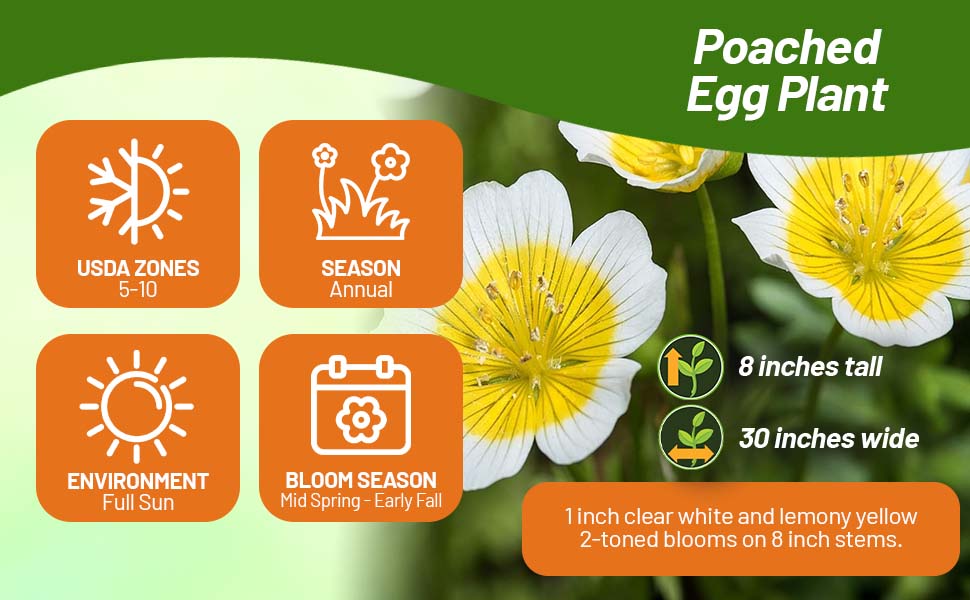
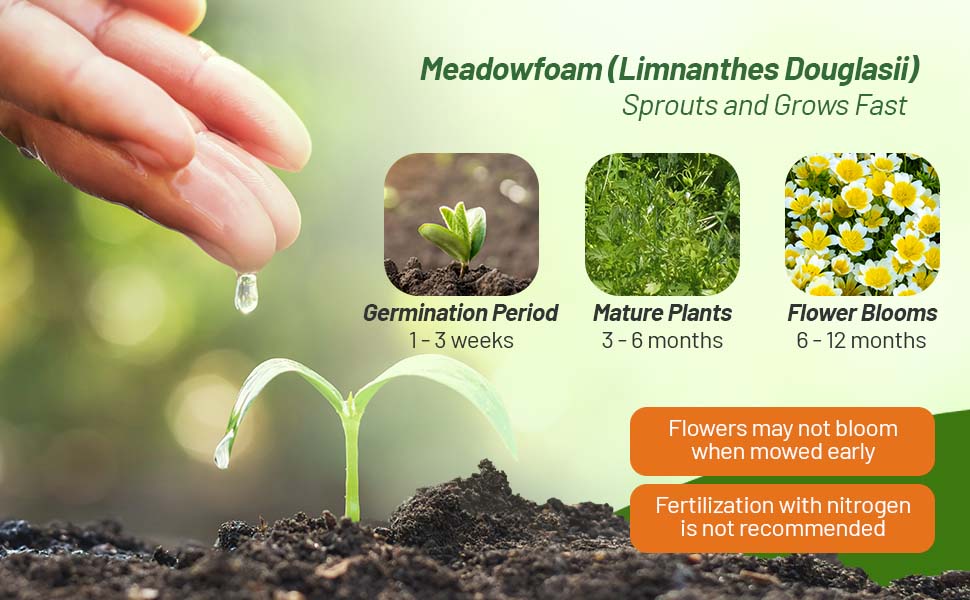
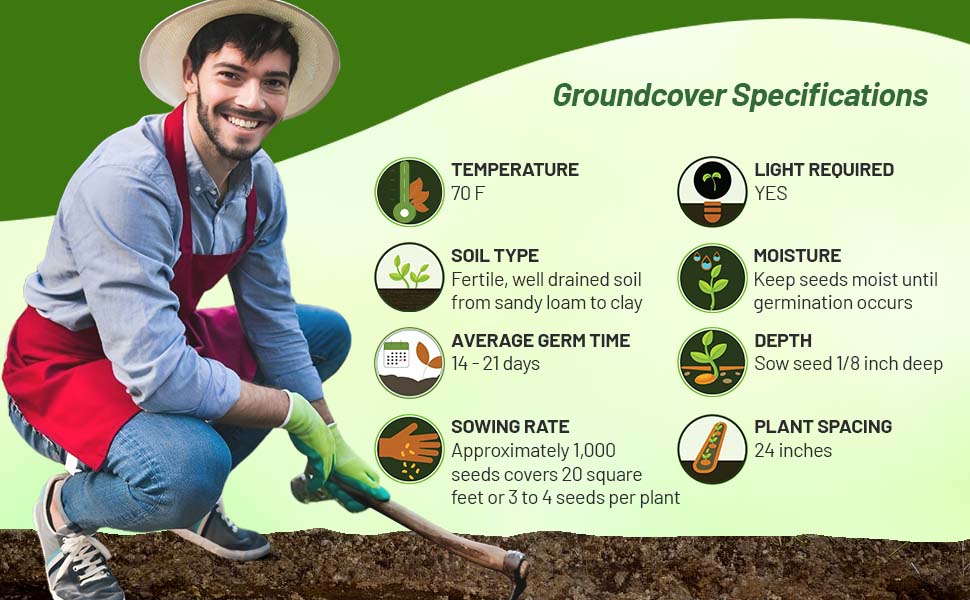
Meadowfoam (Limnanthes Douglasii) - Grow Limnanthes Douglasii seeds for this annual that is native to California. Limnanthes is commonly called Poached Egg Plant or Meadowfoam, and it is not only visually very striking and attractive, but it also has a very nice aroma as well. Limnanthes Poached Egg Plant is not fussy about soil, and it will easily and quickly spread, creating a low-growing, shiny, carpet. Each meadowfoam plant can spread up to 30 inches! Poached Egg Limnanthes is a very long blooming annual with a mass of charming, 1 inch clear white and lemony yellow 2-toned blooms on 8 inch stems. It easily sows its own flower seeds for next year's display. Meadowfoam plants are great as a ground cover plant, and they will grow well in pots too.
Sow Limnanthes Douglasii seeds directly outdoors in a prepared seedbed in spring after danger of frost has passed. Meadowfoam seed should be pressed into the soil and very lightly covered with soil. When large enough to handle, thin the Poached Egg Plant seedlings.
Common Questions
What are these flowers used for in the landscape?
These are great for beds and borders, city gardens, prairie gardens, cottage gardens and in containers.
Do these flowers attract any pollinators?
Yes, these flowers will reward your garden by attracting bees, butterflies and pollinating insects.
Do I need to prune at the end of their bloom season?
Yes, these should be pruned back after they are done flowering.
Planting Directions
TEMPERATURE
60 - 65F
AVERAGE GERM TIME
12 - 40 days
LIGHT REQUIRED
Yes
DEPTH
1/16th inch deep
SOWING RATE
2 - 3 seeds per plant
MOISTURE
Keeps seeds moist until germination
PLANT SPACING
10 - 12 inches
Purple Bell Vine (Rhodociton Atrosanguineus) - Grow Rhodociton Atrosanguineus seeds for an exotic vine that will have everyone's attention! Rhodociton Purple Bell Vine has heart-shaped leaves and dark purple bell-shaped flowers that dangle from thread-like stems. Bell Vine uses include baskets where it will cascade over the edges and look stunning or give it a trellis where it will grow with support up to 120 inches in height. Rhodociton Purple Bells needs rich, well-drained soil and full sun to partial shade although it prefers afternoon shade in hotter climates. Purple Bells bloom from late spring to late fall.
Sow Purple Bell Vine seeds indoors in late winter. Gently press the flower seeds into the soil and barely cover the seed with soil. Keep consistently moist until germination occurs. Harden the seedlings off for 10 days or more before planting outdoors. Purple Bell Vine is free-flowering and needs little care.































